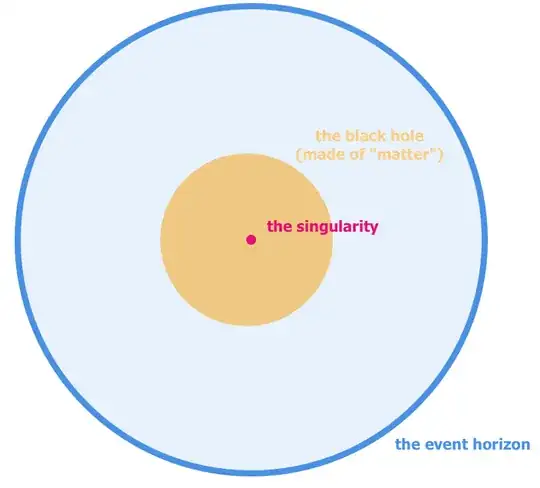Experimentally, we know there exist things that look a lot like black holes. They approach having an event horizon, have a density that matches black holes, and even collide in a way consistent with black holes.
We do not have a way to determine if there is some process that prevents the formation of a singularity and termination of time-like curves on all paths that cross a certain radius.
There are black hole models where no singularity exists; such as ones where the strings of string theory form a surface stretched over the event horizon. Others have a kind of vacuum energy pressure that prevents collapse at some epsilon above critical density to form a true event horizon.
The important thing is that these models are nearly indistinguishable from a classic black hole with a singularity from the outside.
The classic black hole with a singularity has no "inner radius". Everything crossing the event horizon has its world-line end at the singularity in finite proper time; much like there is no way to prevent you from moving into the future, once over the event horizon there is no way to prevent yourself from moving towards the singularity. The singularity ends up being in everything's future.
No persisting structure can exist, because you can't support the stuff behind you, no more than you can build a house that supports something that was there before the house was built.
Now, in the other cases, this doesn't hold. No singularity means there isn't a world-line termination in everyone's future.
https://www.mdpi.com/2218-1997/9/2/88 is an example of such a model.
In such a model, these non-black holes match the observed features of black holes, without having a singularity; something (the vacuum energy) generates a pressure within what would be the event horizon to prevent collapse to a singularity, and a thin membrane near what would be the event horizon corresponds to the event horizon.
This could be described as an alternative to a black hole; instead of a singularity, the end-state of gravitational collapse is something else.
